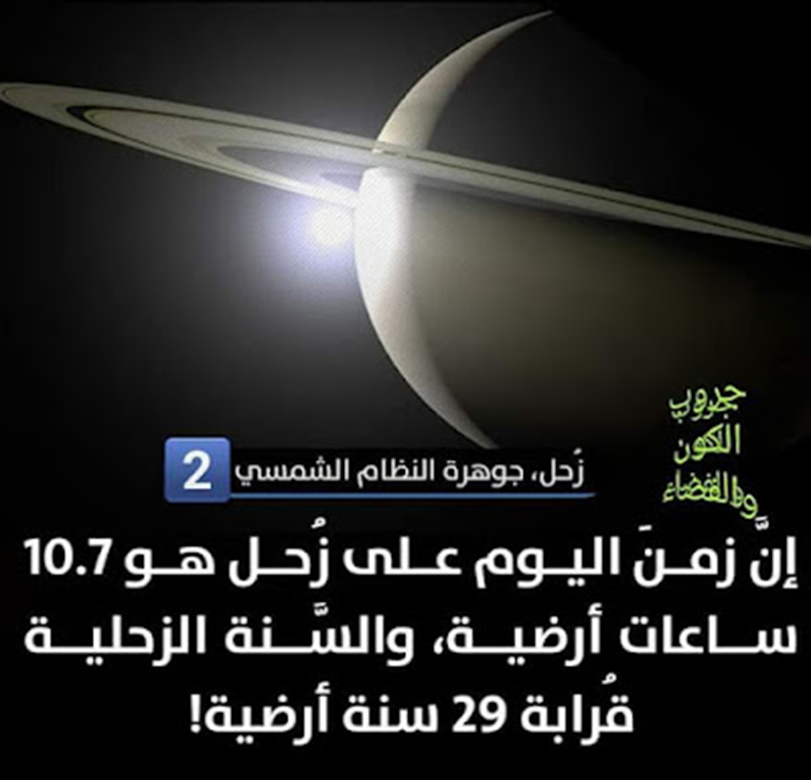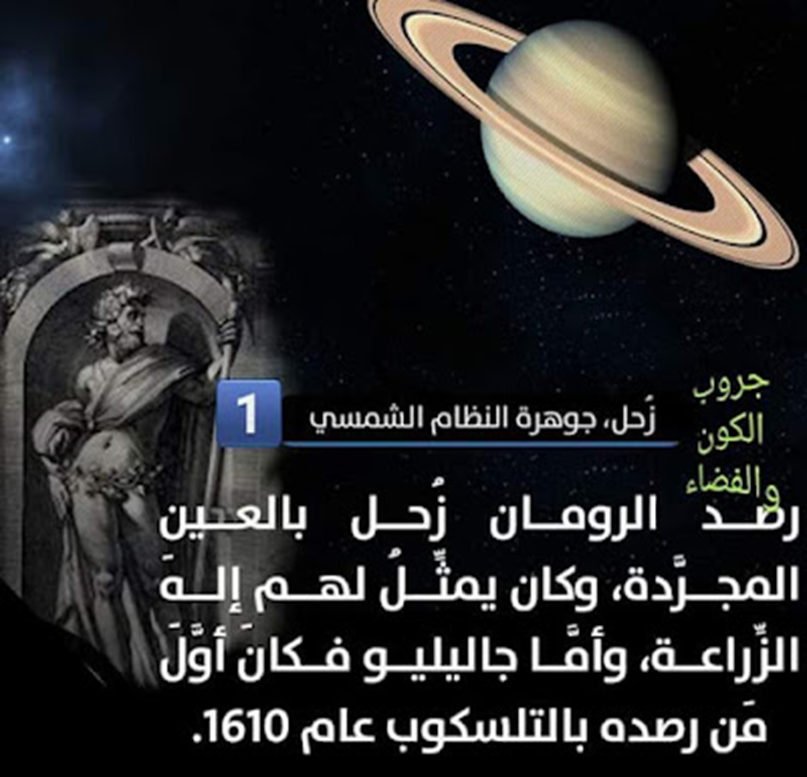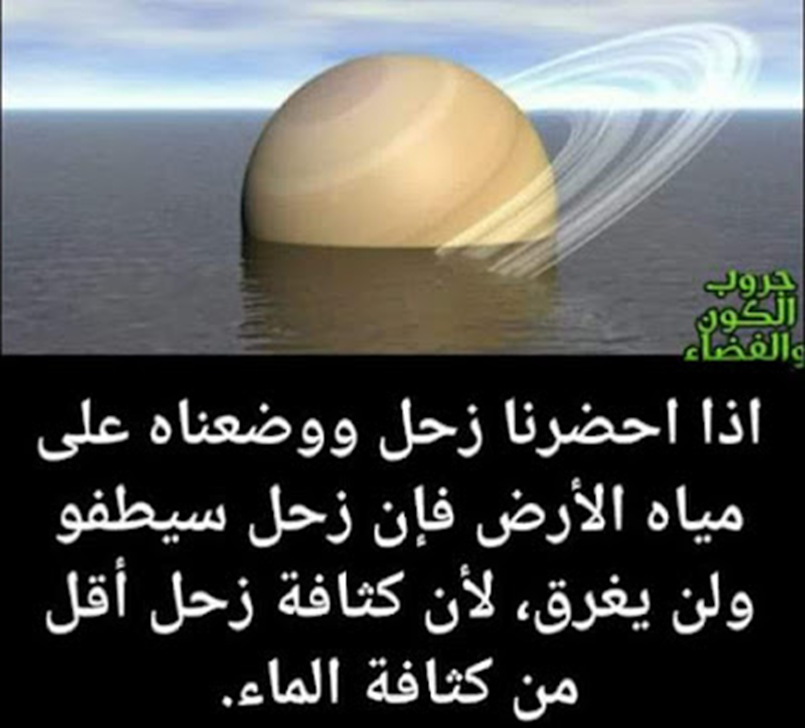Amazing facts about Saturn and its rings

Saturn appears to the naked eye in the sky in the form of a bright star, and the oldest known observations of the planet are those made by the inhabitants of Mesopotamia in the year 650 BC, when they observed Saturn's occultation behind the moon. Historical sources indicate that Saturn was spotted by Copernicus in the year 1514 AD and was in the sign of Scorpio. It was observed by Tycho Brahe on August 18, 1563 AD, when it was associated with Jupiter in the sign of Scorpio as well.
How many days of the year in Saturn and the planets?
spiral stars
Planets of the solar system
Saturn icon of the solar system
A year is defined astronomically as the time it takes for any of the planets or any other celestial body to complete a complete revolution in its orbit around the sun.
Saturn takes a long time to complete its orbit around the sun. Where he needs 10,759 Earth days

That is, approximately 29.122 years on the planet, but it rotates on its axis very quickly, as it needs only 10 hours and 33 minutes to complete a full day, which makes the number of days in the year on Saturn reach 24,491.07 days of Saturn.

The number of days in a year on other planets
The solar system consists of 8 planets, and the following is an explanation of the distance of each of them from the sun in order, with an indication of the number of days of the year in each of them on the planet Earth, noting that the earthly day is equivalent to 23 hours and 56 minutes
Planet Mercury:
The average distance of Mercury from the sun is 58 million km, and the days of the year are 88 Earth days.
Venus:
The average distance of Venus from the sun is 108 million km, and the days of the year are 225 Earth days.
Planet Earth:
The average distance of the Earth from the Sun is 150 million km, and the days of the year are 365 Earth days and 6 hours.
Mars:
The average distance of Mars from the sun is 228 million km, and the days of the year are 687 Earth days.
Jupiter:
The average distance of Jupiter from the sun is 778 million km, and the days of the year are 4,333 Earth days.
Saturn:
The average distance of Saturn from the sun is 1.43 billion km, and the days of the year are 10,759 Earth days.
Planet Uranus:
The average distance of Uranus from the sun is 2.87 billion kilometers, and the days of the year are 30,687 Earth days.
Neptune:
The average distance of Neptune from the sun is 4.5 billion km, and the days of the year are 60,190 Earth days.
Facts and information about the planet Saturn
In the past
The Assyrians drew the planet #Saturn surrounded by three snakes
In fact, these snakes are the rings that surround Saturn, which scientists saw after the invention of the telescope in the seventeenth century!
There are references in the discovered Assyrian cuneiform texts to a device used to monitor stars and planets, and the Nimrod lens may be part of this device!
The picture is for clarification

The planet Saturn was known by the ancients such as the Babylonians and other civilizations of the East, and it acquired its name after the Roman gods Saturn, and despite the great mystery around it, there are some distinct facts about it, including:
Saturn is the second largest planet in the solar system in size; with a radius of 58,232 km; That is, it is 9 times larger than the radius of the planet Earth.
Saturn is the sixth planet away from the sun, as it is 9.5 astronomical units away from it; That is 1.4 billion kilometers.
The planet Saturn is a huge gas ball consisting mainly of helium and hydrogen gases; It consists of 96% of hydrogen gas, and 3% of helium gas, with traces of other gases such as; methane, ammonia, acetylene, ethane, propane, and phosphine.
Saturn is the farthest planet from Earth that can be seen with the naked eye.

It is known as the fifth brightest celestial body in the solar system.
He has the most beautiful and complex rings around him.
Saturn's rings and moons
Saturn's rings are divided into 7 groups named according to the English alphabet from A to G depending on the oldest discovery.
Saturn has a huge number of moons, up to 150 moons, of which 82 are large main moons; The largest are Titan and Rhea.
The distinctive rings of Saturn
This video shows us what the rings of Saturn look like
It shows the shape of the process of its organized rotation, and the speed of the rings of Saturn.
The rings of Saturn are the most extensive system of planetary rings of any other planet in the solar system.
It consists of countless tiny particles, ranging in size from micrometers to metres, that orbit the planet Saturn.
The ring particles consist almost entirely of water ice, with elements swimming in succession made up of rocky material
Discoverer: Galileo Galilei.
There are six main rings of Saturn, each ring consisting of thousands of small rings. These rings are huge, the largest of which spans 170,000 miles (273,588 km).
!!Saturn will float in water
Our gas giant is the planet Saturn, which is larger than Earth
700 times it will literally float in water

This is due to the difference in density as it is dense
The gaseous planet is 0.69 grams per cubic centimeter
While the density of water is 1 gram per cubic cm.
Of course, assuming that there is an ocean in the universe
This gas giant is expanding and possibly enclosing
!!Partially solid core
But here we are talking about density, not mass
Each material has a density that distinguishes it from other materials, and there is a relationship between volume, density, and mass, as the relationships between them are represented in the following form
Density = mass/volume
And mass = density x volume
Volume = mass / density.
Planet Saturn, icon of the solar system
It is the least dense of the #planets, as its average density is 0.69 g / cm3, and therefore it is less dense than water.
As is the case in #Jupiter, 75% of it is hydrogen, 25% is helium, and small amounts of water, methane, ammonia and rocks.
The concentration of helium in the outer atmosphere of Saturn is slightly higher than the concentration of hydrogen.
Composition of Saturn's inner planet

The inner section consists of a rocky core topped by a layer of liquid and molecular hydrogen.
This section is hot (12,000 degrees Celsius), and Saturn radiates more energy into space than it receives from the sun.
!!The beautiful planet is slowly boiling inside
When looking at #Saturn with a telescope, it appears oblate
It was found that its equatorial diameter is greater than its polar diameter by 10% (Equatorial diameter: 120,536 km).
Polar: 108,728 km)
Hence, it is the most flattened among the planets of the solar system
Saturn Expeditions
Saturn has been reached with four flights by spacecraft; And all of them were able to study it and send a large amount of information about it to scientists on the planet

Source: websites

